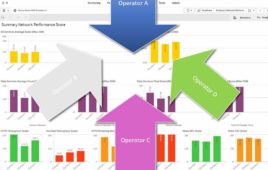Sprint Nextel posted its best net adds in four years but declines in ARPU and the cost of handset upgrades nearly doubled the company’s losses.
Sprint added 644,000 new customers in the third quarter after the defection of its postpaid subscribers slowed and prepaid customers flocked to services on its CDMA network. The company lost 107,000 postpaid subscribers but added 471,000 prepaid subscribers and 280,000 wholesale customers. The company added a total of 364,000 new retail subscribers, which includes both postpaid and prepaid customers, said a company spokeswoman.
Sprint posted its best year-over-year improvement in postpaid churn in five years, which came in at an all-time low of 1.93 percent. Prepaid churn also improved, dropping to 5.32 percent from last year’s 6.65 percent.
Nearly 10 percent of Sprint’s postpaid customers upgraded their handsets as demand for the HTC Evo and Samsung Epic remained strong. The carrier spent about $1.1 billion to subsidize prepaid and postpaid devices in the third quarter 2010 compared with $950 million last year.
Service revenues decreased about 2 percent over last year to $6.4 billion amid a one dollar decline in postpaid ARPU, which came in at $55, and a seven dollar drop in prepaid ARPU, which fell to $28. Sprint said the decline in prepaid ARPU was due to the inclusion of Virgin Mobile and Assurance Wireless customers, who have lower ARPU than its Boost Mobile subscribers.
The rise in subsidy costs and declines in both postpaid and prepaid ARPU pushed Sprint deeper into the red. The carrier lost $911 million in the third quarter, a 91 percent increase over last year’s loss of $478 million. Sales were nearly flat at $8.15 billion.
Sprint’s shares fell more than 10.5 percent in morning trading on the New York Stock Exchange, dropping 50 cents to $4.27 by 10 a.m. Central.
Looking forward to the fourth quarter, Sprint predicted improvements in its prepaid and postpaid results.




